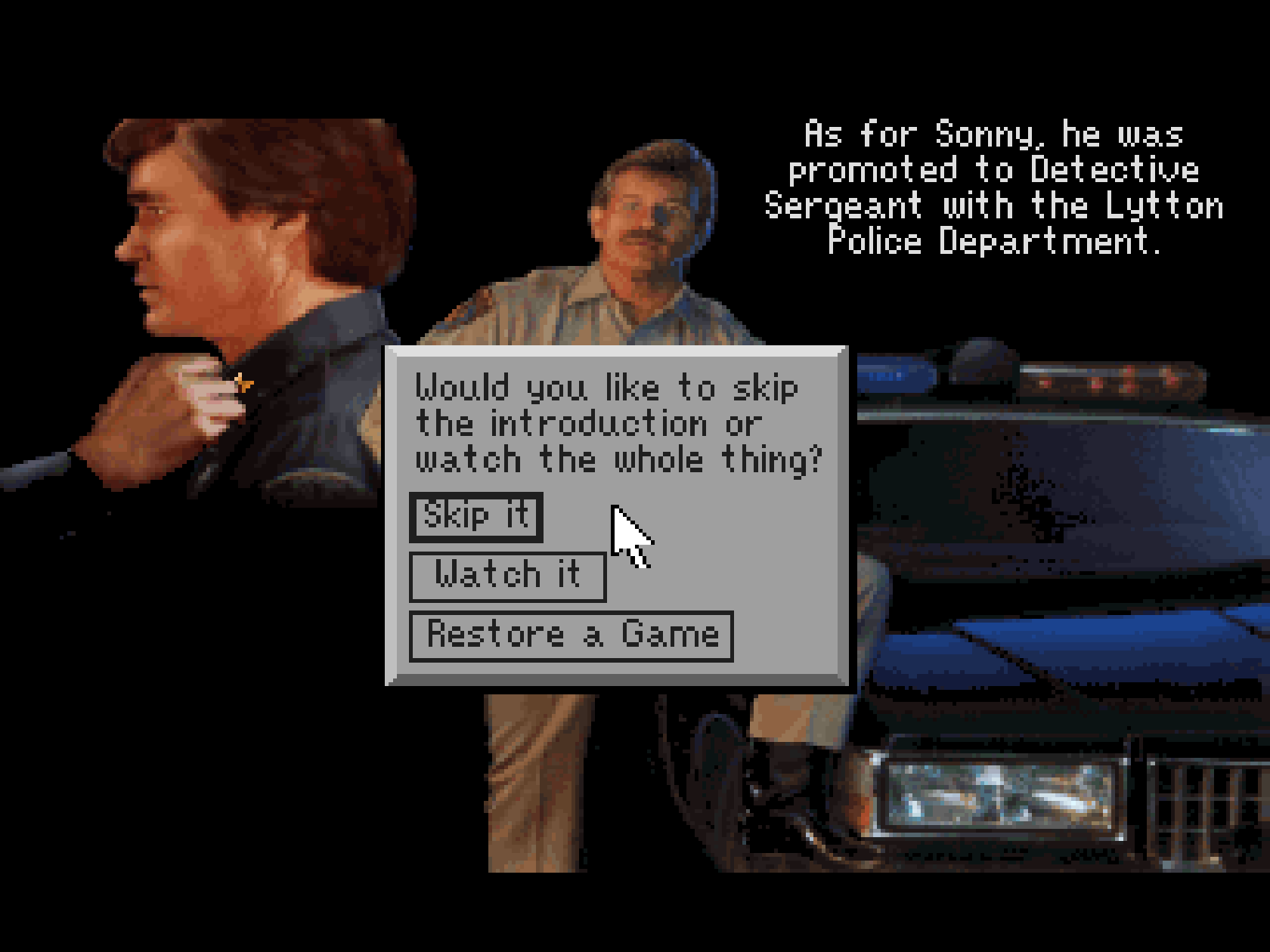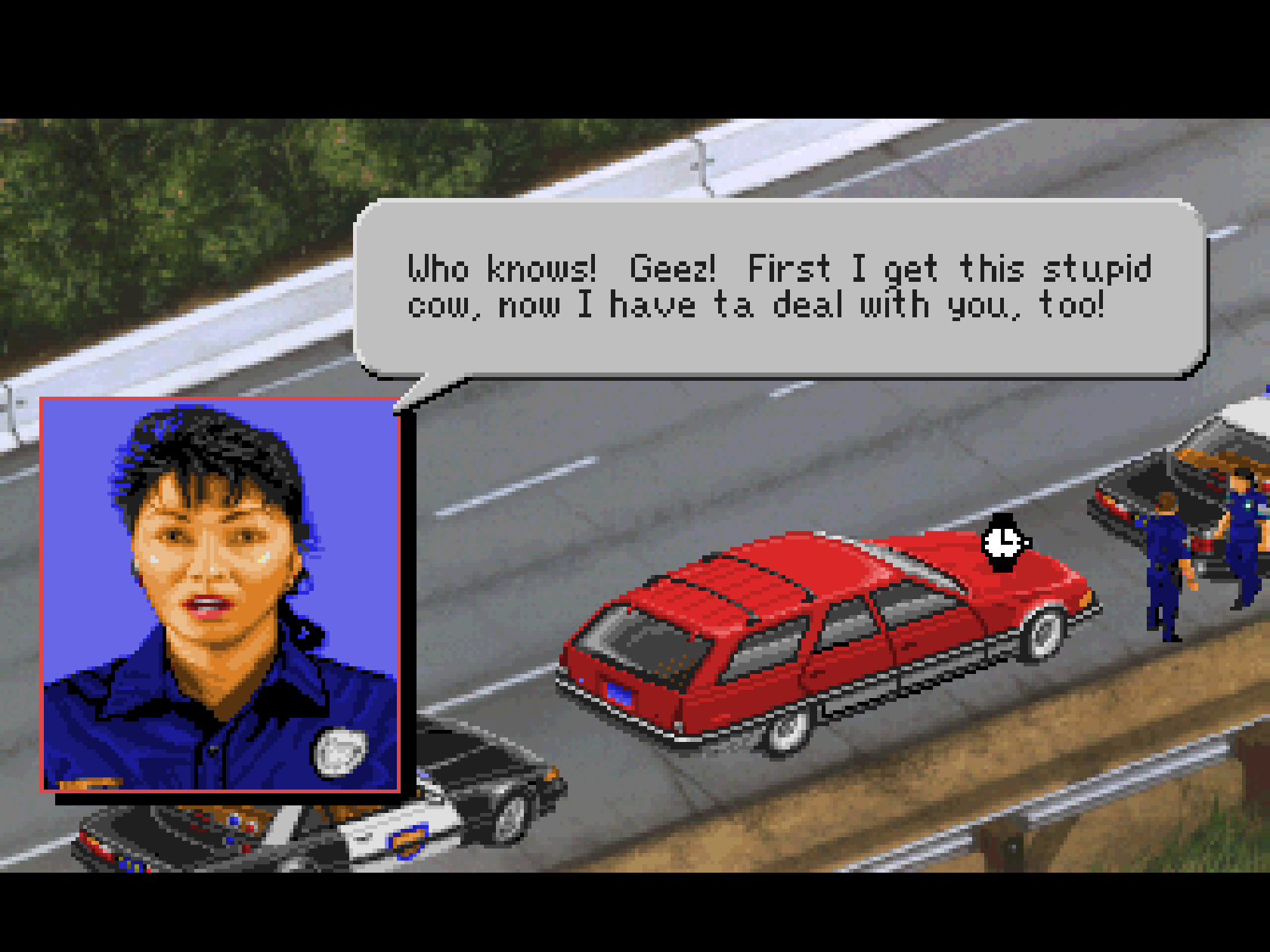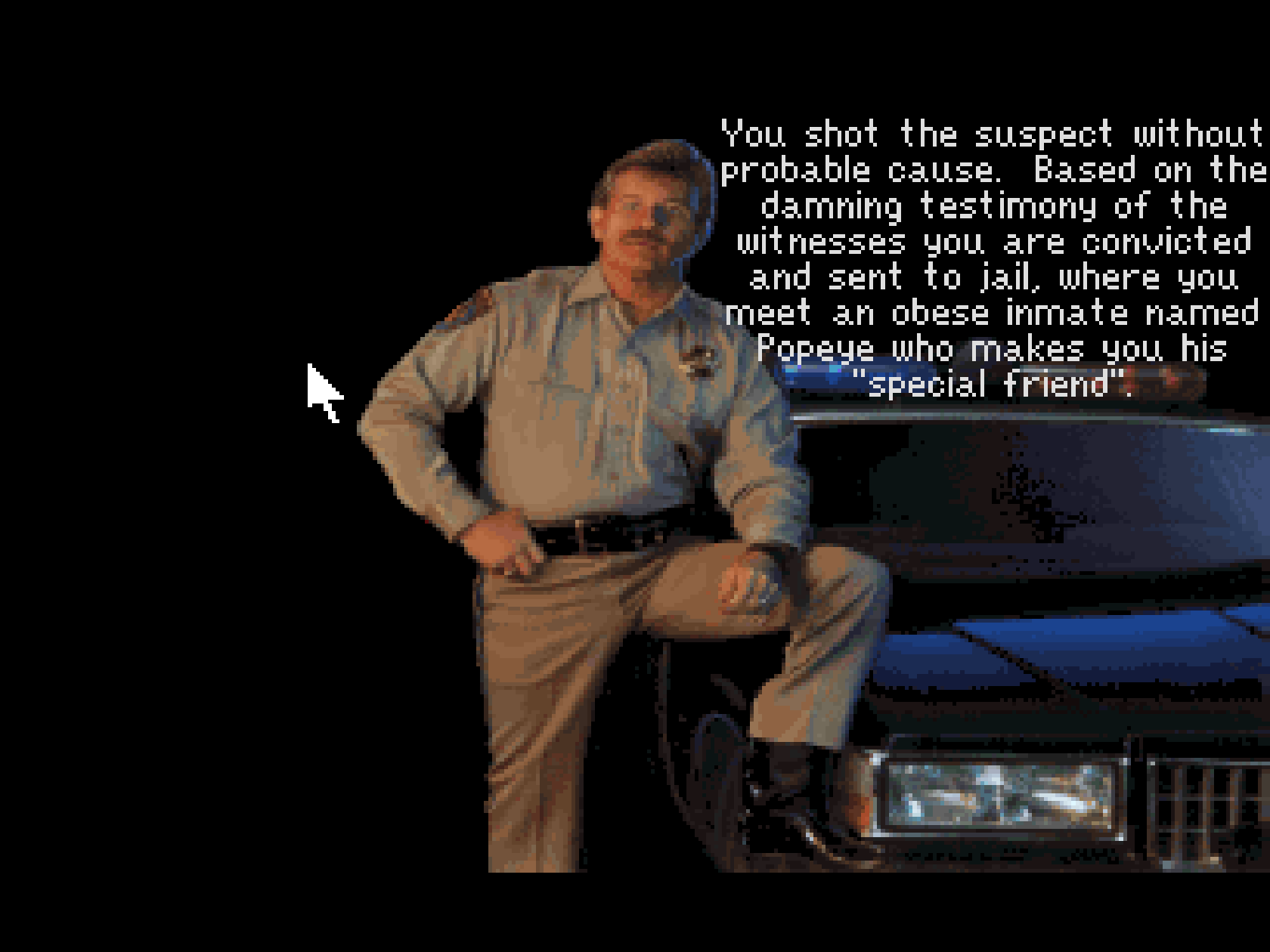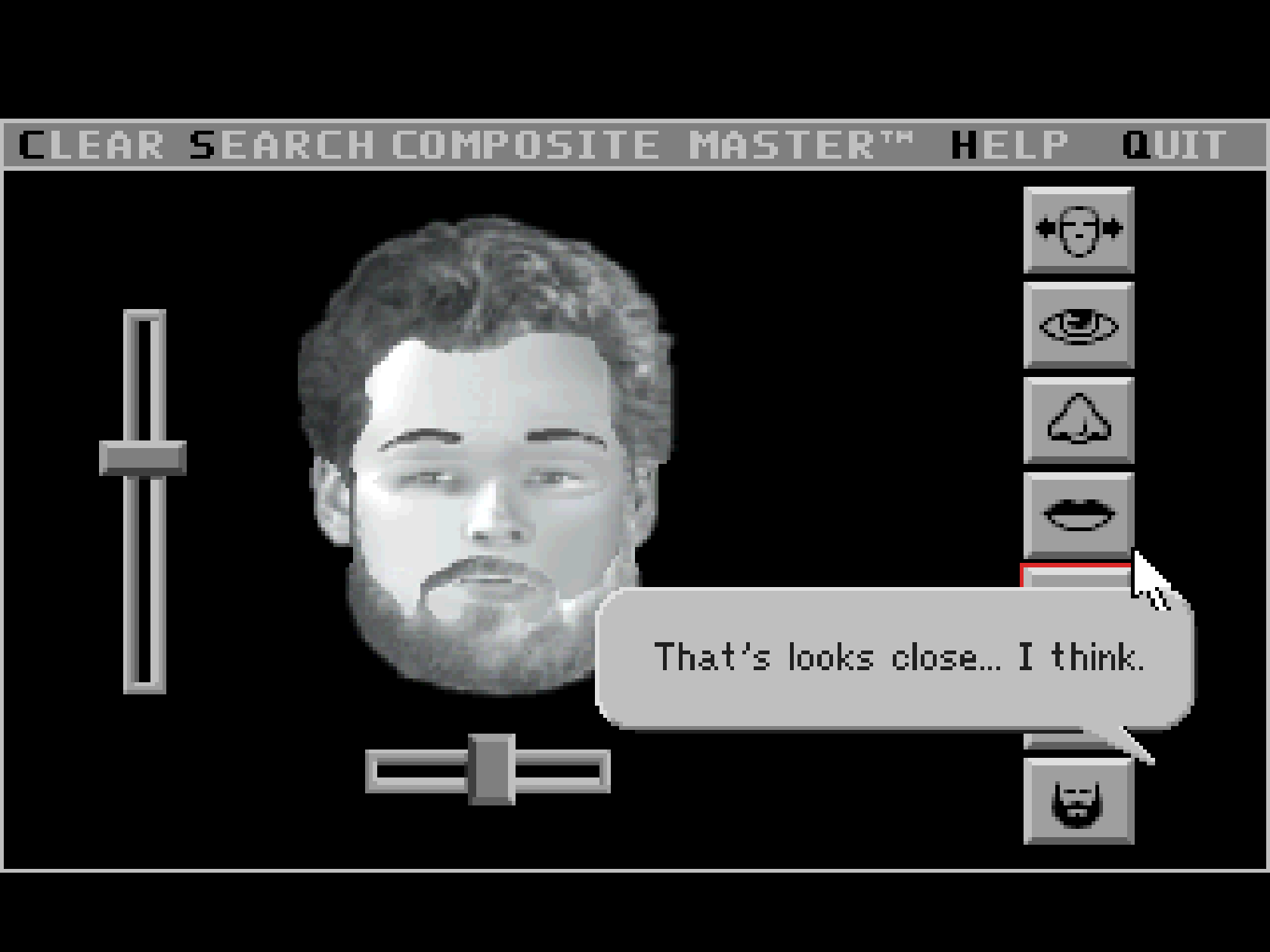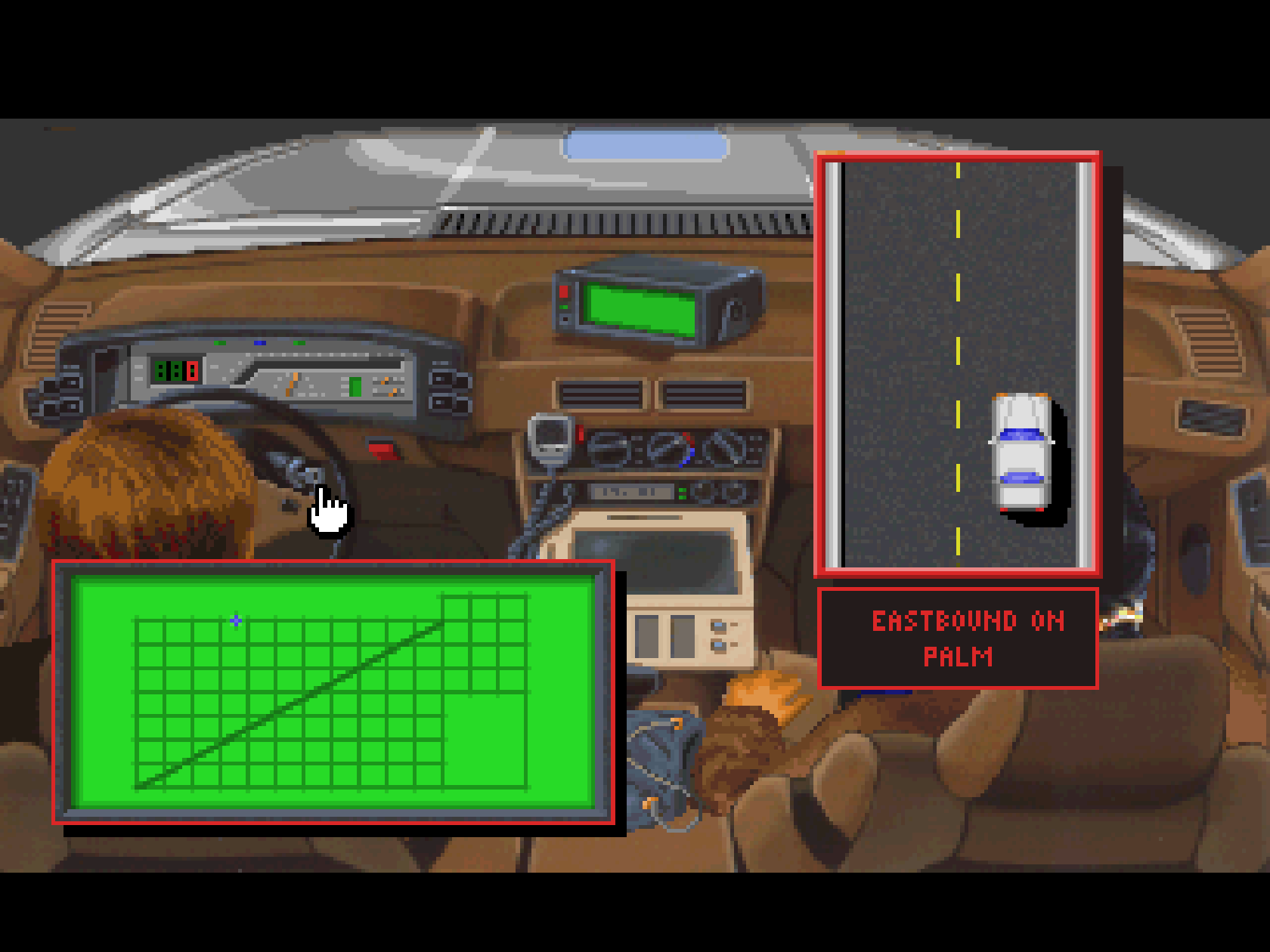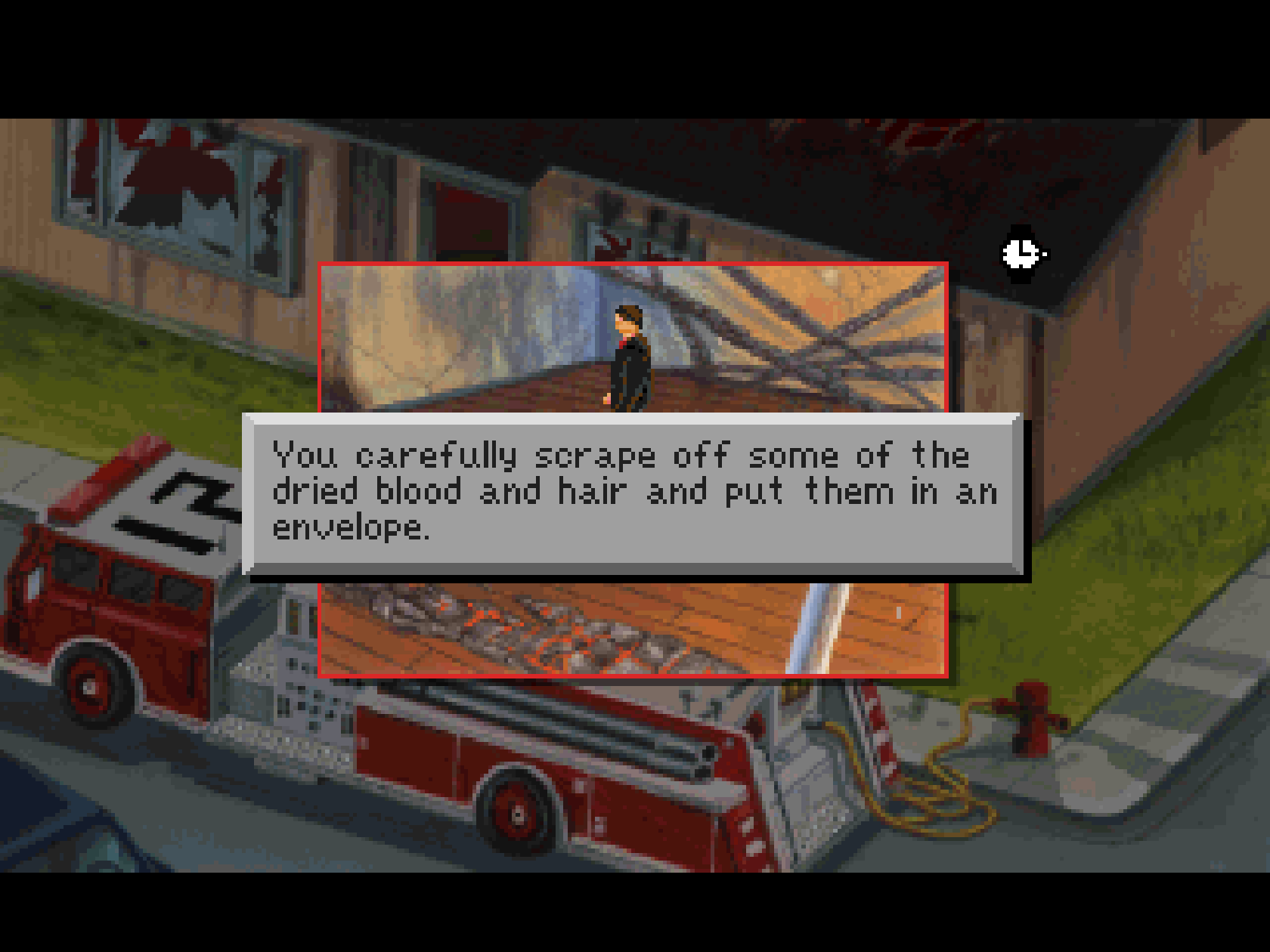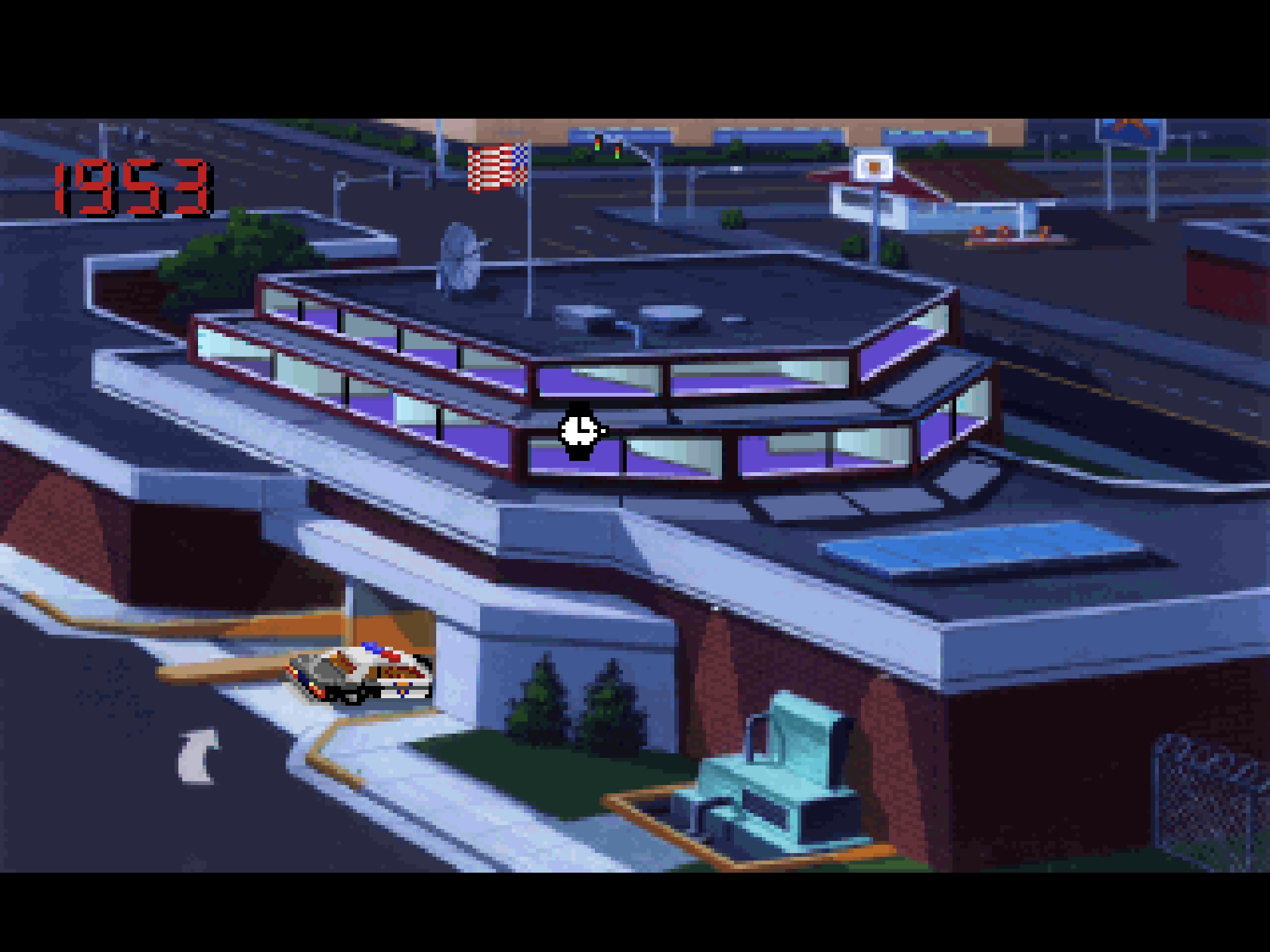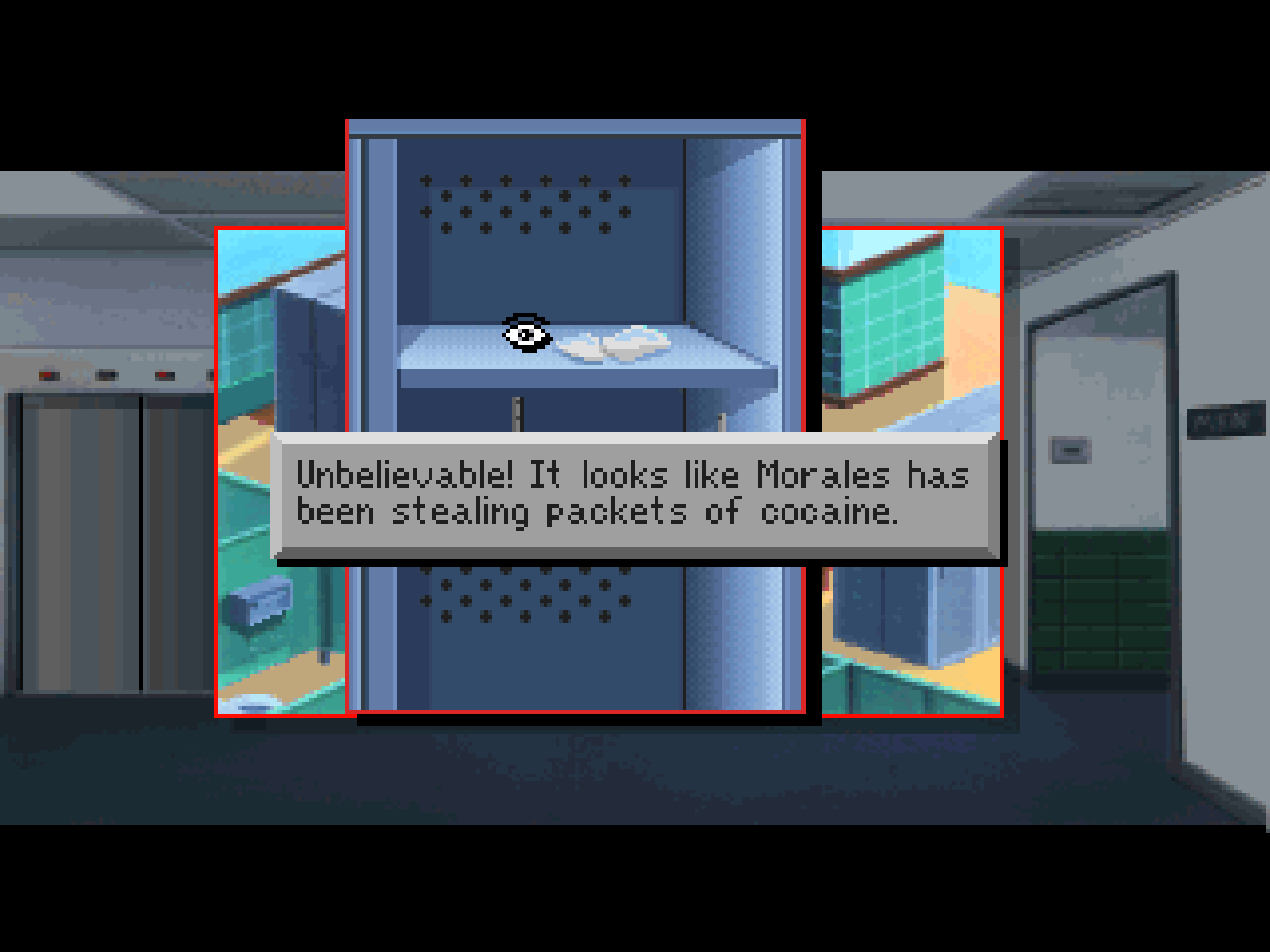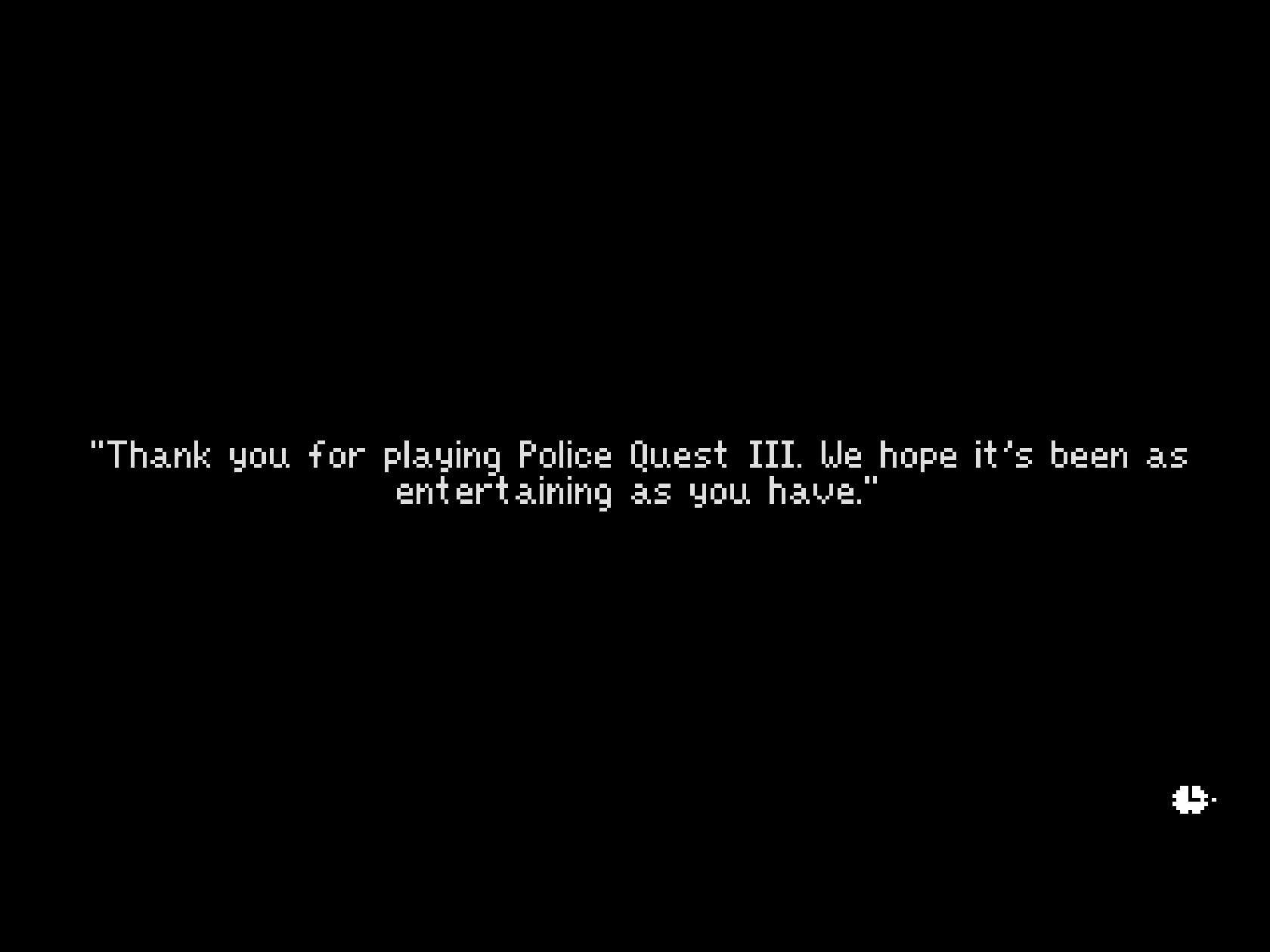Police Quest III: The Kindred (Sierra On-Line) - 1991
Series: Let's Adventure! A Journey into Adventure Games (1980-1999)This review is part of the Let's Adventure! series. See all reviewed games sorted by rating here.
- ← The Dark Crystal (On-Line Systems) - 1983
- Police Quest III: The Kindred (Sierra On-Line) - 1991
- → Tass Times in Tonetown (Interplay Productions, Brainwave Creations) - 1986
Article 63 of 101 in this series.
Police Quest III: The Kindred is a 1991 police procedural point-and-click adventure video game developed and published by Jim Walls and Sierra On-Line.
Sonny Bonds, the sergeant of Lytton police department, thought he could finally enjoy peaceful life with his wife Marie after the drug lord Jessie Bains has been put away for good. However, a series of gruesome murders perpetrated by a sinister cult known as “The Kindred” shocks the city. Marie becomes a victim of their attack and falls into a coma. It becomes Sonny’s very personal mission to track down the attackers and make them pay for their crimes.
The Kindred is the third installment of the Police Quest series, its events taking place after those described in Police Quest II: The Vengeance. The game brings back some of the elements of the first game, such as a modified version of driving sequences and police procedures unrelated to the main plot the protagonist must go through. Computer work is particularly emphasized, requiring the player to perform tasks such as using facial composite software or figuring out murder patterns by studying a map. Like other Sierra adventures of the time, the game uses an icon-based interface for interaction with the environment.1
Sonny has been promoted following the events of Police Quest II, and the game starts off with you giving a briefing to the other detectives to kick things off. There are multiple narrative threads in this title which gives it some additional depth, and you dive right into one of them as soon as the game starts. Detective Pat Morales has apparently got a complaint lodged against her for use of abusive language. Since these games are effectively police procedure simulators, you’re going to need to start off by interviewing her, then deciding what to do about said complaint and file the appropriate paperwork.
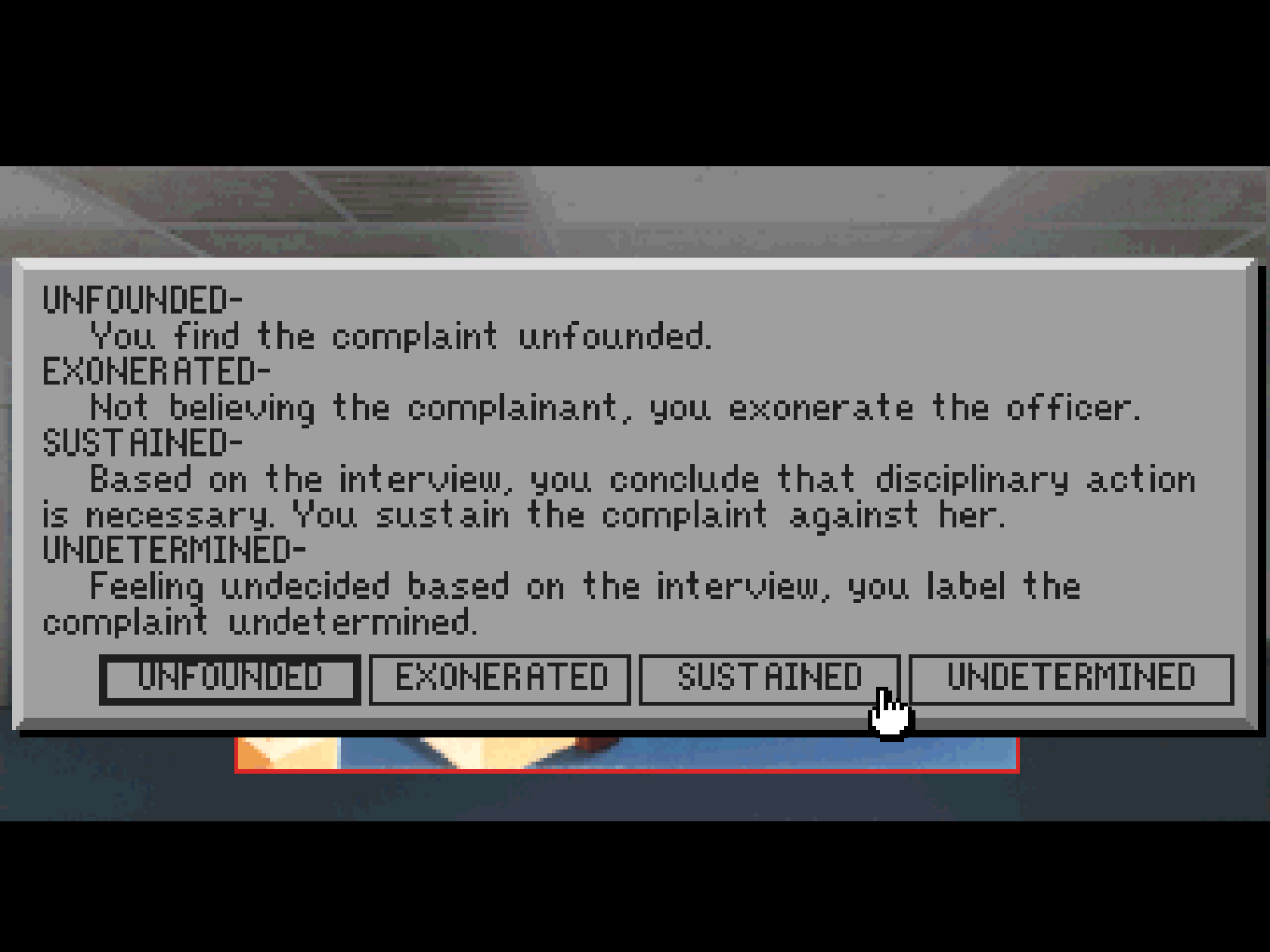 Picking the wrong option when filing paperwork can lead to a game over
Picking the wrong option when filing paperwork can lead to a game over
Following the proper protocol at all times is a requirement to being successful in any Police Quest game, and luckily for you these protocols are well documented in the game’s manual. There are all sorts of procedures outlined here such as how to handle felony situations, obtaining entry into private property, courtroom procedures and forceful entry into dwellings. If it’s in the manual, you’re likely going to need to do it at some point in the game so it’s not a bad idea to do the reading up front so you know what you’re dealing with.
Detective Morales will prove to be a pain in your ass throughout the game. Once you find your way downstairs on the first day and get into the squad car you’ll have to drive out to observe a failure to sign, as the driver that the detective pulled over doesn’t want to sign a citation because the officer was being rude. Yup … it’s Morales again.
This is another segment of the game where you’re presented with a couple options as to how you can respond, and if you pick the wrong one - it’s game over. You can send the pregnant woman to jail (which is what Detective Morales suggests), but doing so gets the department sued for $1 million and you lose your job (game over).
Being a Sierra game, expect almost every decision you make to potentially result in death. This actually makes the game a little easier to complete as exercising good game save hygiene will allow you to trial-and-error your way through most scenarios. Just save, try something, fail, reload, try the other option and move along … rinse and repeat.
You’ll still need to pay attention and take notes though - especially when characters mention things like case numbers, serial numbers and addresses.
There’s a computer you’ll need to use to look up case details or search for items by serial number. These pieces of information are typically mentioned during conversations with other characters and may only be referenced once. If you miss a case number when the chief is briefing you, it may not be available again and you’ll have to reload a previous save and repeat the conversation to get that piece of information (or use a walkthrough).
The computer is actually used for a number of scenarios in this game. My favourite is the scene where you bring a homeless woman back to the office because she claims she saw someone suspicious and wants to describe them to you. Instead of a police artist generating a composite image based on her description, you use the computer to generate a face based on her prompts. This is actually kind of fun and breaks up some of the monotony of police procedure.
Along with the ongoing issues with Detective Morales (who ends up being assigned as your partner on Day 2) is the subplot involving the attempted murder of your wife. Mary is stabbed in the parking lot of the mall, and your captain knows you won’t rest until the case is solved so he assigns it to you to investigate.
Investigating the case involves a lot of driving back and forth between locations and the police station. The tedious manual driving from Police Quest: In Pursuit of the Death Angel is back, but this time without any visual differentiation on the map (as the VGA remake of PQ1 provided). You just drive in a direction and wait for the road signs to tell you where you are - and if you’re approaching a location.
I did not enjoy this at all. It honestly felt like filler most of the time and was there to slow you down.
You’ll have to deal with a handful of highway patrol scenarios early on, which aren’t too difficult but require you to drive back and forth until the relevant event triggers. You’ll also have to drive back and forth to various locations and the police station to advance the story as the game progresses. There is a lot of driving in this game, and honestly I would have appreciated a “fast travel” type of option near the end …
The locations you drive to will require investigation, and this involves more police procedure (properly collecting and handling evidence). You have a field kit in the trunk of your car that you need to open and take everything out of each time you visit a crime scene. Once you collect and bag evidence you need to return the field kit items back to the kit before you can leave the scene. This just seems like something they could have automated for you, as it artificially delays you from progressing to get a message like “You can’t get into the car until you return the field kit items to their respective slots in the kit”, or something like that.
After each scene you will either return to the police station or the hospital. If you go back to the station you’ll either be booking a perpetrator (if you arrested someone) or booking evidence. When booking evidence you’ll need to enter the case number the evidence belongs to, so make sure you’ve taken note of these. If you book a perp, you’ll need to provide the correct booking code. These are all in the manual, so you just need to make sure you pick the right one (it’s not that hard).
The subplot about your wife actually leads into a thread about multiple murders that have some kind of occult ties to them. You’ll need to keep track of the locations of these murders as there’s a final segment on the computer where you need to plot the crimes on a map of the city and draw a pattern to try to tie them together. Assuming you do this correctly you’ll draw a pentagram that will give you the location of the final crime scene.
It’ll come as no surprise that Detective Morales is tied up in all of this (there are signs throughout the game). The game also manages to link the series antagonist (Jesse Bains) to this game as well by introducing his brother near the end as being affiliated with one of the perpetrators you were trying to hunt down.
Though I may not love the driving in this game and find it overused, the strong story more than makes up for it. This is no surprise as the game was written by Jane Jensen, who would also go on to write Gabriel Knight: Sins of the Fathers, so you know you’re in for some twists and turns and a sprinkling of the occult.
I have very fond memories of this game, and I really enjoyed going back to it - but it’s not as good as I remembered. Though there are a lot of digitized sound effects, and occasionally there is background music most of the time you just have generic background noise. The driving segments of the game are overused and just make everything feel slower as a result.
You do get to use the gun near the end of the game (exactly twice), but it’s not really obvious either time that this is necessary until you die and are prompted that maybe you should be “more prepared” next time.
Although I did find some aspects of this game entertaining, overall I was just trying to get to the end so that I could move on. If not for the strong story I would probably recommend skipping this game, but if you’ve played the first 2 entries in the series you might as experience the conclusion of Sonny Bonds’ story arc.
Game Information
| Game | Police Quest III: The Kindred |
| Developer | Sierra On-Line |
| Publisher | Sierra On-Line |
| Release Date | 1991 |
| Systems | DOS, Amiga |
| Game Engine | SCI |
My Playthrough
| How Long To Beat? | 4.5 hours |
| Version Played | DOS via ScummVM |
| Notes | Walkthrough, Manual |
Score
See here for a refresher on how we’re scoring these games.
| Atmosphere (20) | 10 |
| Story (25) | 20 |
| Experience (15) | 7 |
| Impact (10) | 4 |
| 59% |
Gallery
Footnotes
Description from Moby Games ↩︎


